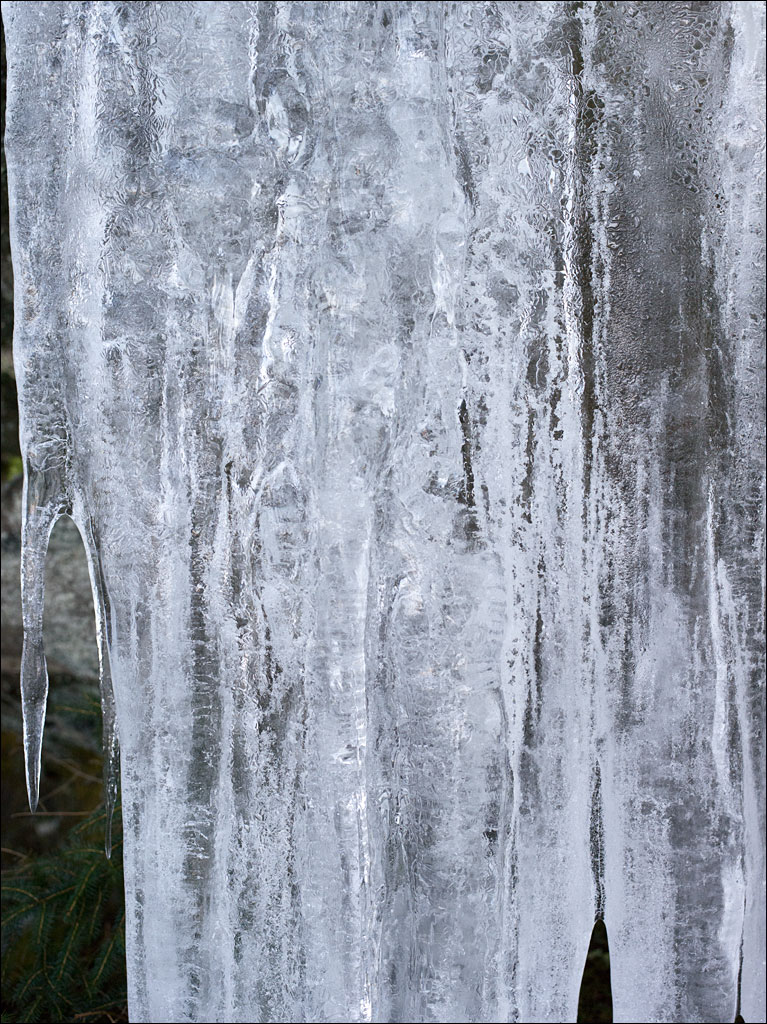 Every city has a landmark that defines it. Imagine looking over a bay and seeing lady liberty holding her torch to the sky—a colossus proclaiming to take the world’s tired and downtrodden. Behind her lies a gleaming metropolis where people come to build their dreams. The place is instantly recognizable—Tokyo. Click on the image for a larger view.
Every city has a landmark that defines it. Imagine looking over a bay and seeing lady liberty holding her torch to the sky—a colossus proclaiming to take the world’s tired and downtrodden. Behind her lies a gleaming metropolis where people come to build their dreams. The place is instantly recognizable—Tokyo. Click on the image for a larger view.
Earth, Water, Fire, Wind, Emptiness
 Naomi and I are excited to announce our upcoming book Earth, Water, Fire, Wind, Emptiness: Tokyo Landscape. Taking inspiration from the five elements in Japanese Buddhism, Earth, Water, Fire, Wind, Emptiness is a homage to a city we called home for ten years. Starting from the simple question of what is the natural landscape of Tokyo, the book weaves a quiet narrative of this city through space and time.
Naomi and I are excited to announce our upcoming book Earth, Water, Fire, Wind, Emptiness: Tokyo Landscape. Taking inspiration from the five elements in Japanese Buddhism, Earth, Water, Fire, Wind, Emptiness is a homage to a city we called home for ten years. Starting from the simple question of what is the natural landscape of Tokyo, the book weaves a quiet narrative of this city through space and time.
80 photographs, 1 illustration, text in English and Japanese, 96 pages, 8.5”x11”.
Available spring, 2015. Click on the image for a larger view.
Horizon
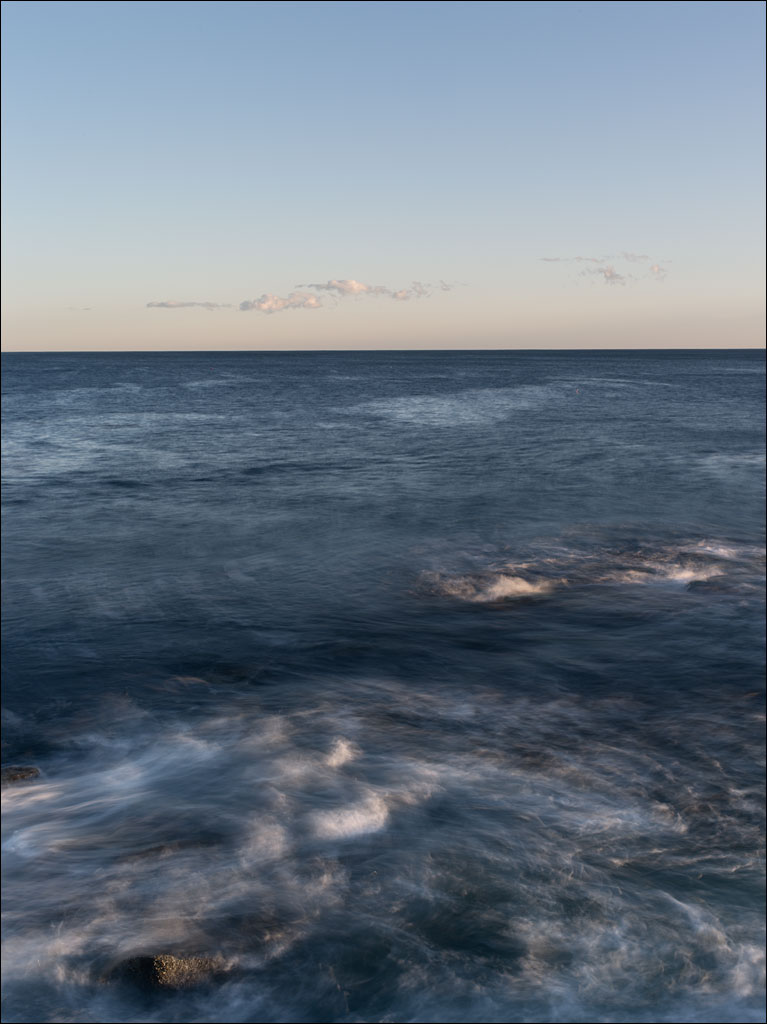 The clarity of the atmosphere in the winter is striking. The horizon, that line dividing the sky from the water, is like a knife edge—a demarcation of our world. There is a magnetism to that unknown over the horizon. Yet, the unknown below the surface of the water ties us to the land. Click on the image for a larger view.
The clarity of the atmosphere in the winter is striking. The horizon, that line dividing the sky from the water, is like a knife edge—a demarcation of our world. There is a magnetism to that unknown over the horizon. Yet, the unknown below the surface of the water ties us to the land. Click on the image for a larger view.
Tracks
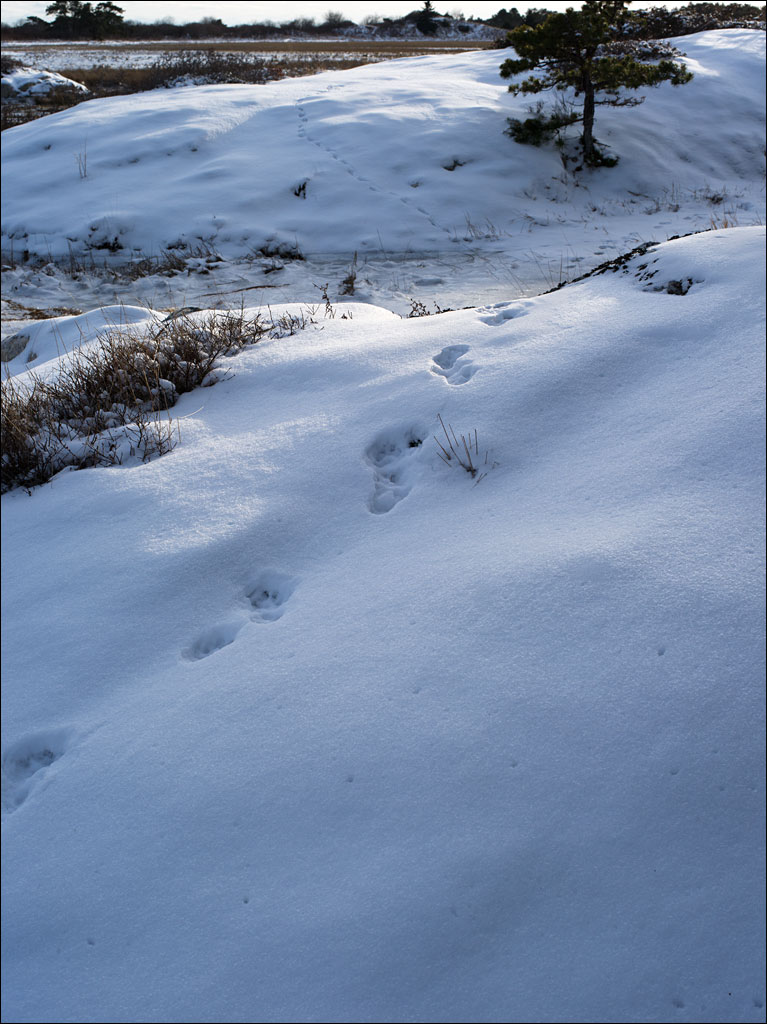 Locard’s exchange principle, named after the French forensic scientist, can be summed up simply—every contact leaves a trace. No matter how small nor how transitory, our journeys leave something of us behind and carry away something with us. Every track, no matter if taken by a solitary traveler, is woven with those that came before and will come after. Click on the image for a larger view.
Locard’s exchange principle, named after the French forensic scientist, can be summed up simply—every contact leaves a trace. No matter how small nor how transitory, our journeys leave something of us behind and carry away something with us. Every track, no matter if taken by a solitary traveler, is woven with those that came before and will come after. Click on the image for a larger view.
Frozen
Snowbound
Where Gods Dwell
 If anyone has seen the work of the director Hayeo Miyazaki, a common motif may strike you: trees. In the movies Castle in the Sky, My Neighbor Totoro, and Princes Mononoke, powerful, towering arboreal characters appear. The early Japanese believed trees, particularly evergreen trees, were dwellings for deities from heaven. With roots firmly in the earth and branches reaching into the sky, living off the wind and sun, and lifespans greater than any human, how could these beings be anything but divine. The Indian poet Rabindranath Tagore said, “trees are the Earth’s endless effort to speak to the listening heaven.” Click on the image for a larger view.
If anyone has seen the work of the director Hayeo Miyazaki, a common motif may strike you: trees. In the movies Castle in the Sky, My Neighbor Totoro, and Princes Mononoke, powerful, towering arboreal characters appear. The early Japanese believed trees, particularly evergreen trees, were dwellings for deities from heaven. With roots firmly in the earth and branches reaching into the sky, living off the wind and sun, and lifespans greater than any human, how could these beings be anything but divine. The Indian poet Rabindranath Tagore said, “trees are the Earth’s endless effort to speak to the listening heaven.” Click on the image for a larger view.
A Tokyo Landscape
 Tokyo, like many cities, is built up of layers upon layers. Time shift those layers, removing old ones and adding new. But somehow, when you stand in front of a landscape, you feel its solidity—a sort of eternal presence. If I had taken this picture one hundred years ago, all I would see would be the water of Tokyo bay (not this canal), the horizon, and sky. Nothing you actually see in this photograph would be there. Click on the image for a larger view.
Tokyo, like many cities, is built up of layers upon layers. Time shift those layers, removing old ones and adding new. But somehow, when you stand in front of a landscape, you feel its solidity—a sort of eternal presence. If I had taken this picture one hundred years ago, all I would see would be the water of Tokyo bay (not this canal), the horizon, and sky. Nothing you actually see in this photograph would be there. Click on the image for a larger view.
Tokyo Ghost Story
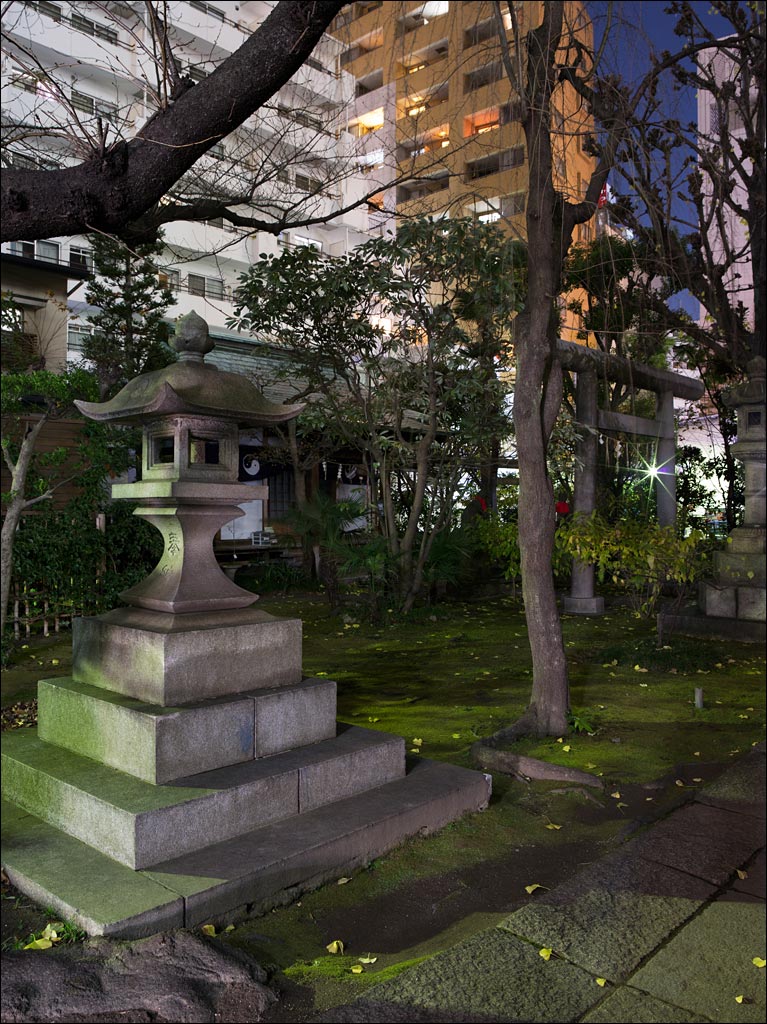 Oiwa Inari Tamia Shrine is located between Tokyo station and the Sumida river. This small shrine is connected to one of the most popular ghost stories in Japan, Yotsuya Kaidan, a 19th century Kabuki play. The story’s main character is a woman named Oiwa. Actors visit this shrine to pay respect to her spirit before performing her role.
Oiwa Inari Tamia Shrine is located between Tokyo station and the Sumida river. This small shrine is connected to one of the most popular ghost stories in Japan, Yotsuya Kaidan, a 19th century Kabuki play. The story’s main character is a woman named Oiwa. Actors visit this shrine to pay respect to her spirit before performing her role.
Oiwa is betrayed by a husband that murdered her father. She is horribly disfigured by a poisoned face cream given to her by Oume, a rival for her husband Iemon. Iemon, repulsed by Oiwa’s appearance, sends an accomplice to assault her to give him grounds for divorce. His partner cannot go through with the deed and reveals the plan to Oiwa. Showing Oiwa her disfigured image in a mirror, she is incensed. In her rage, she fatally injures herself with a sword. She dies cursing her husband, becoming an onryô, a vengeful spirit. By the end of the story, her spirit is revenged. A bloody tale, but a popular one.
Click on the image for a larger view.
Tokyo Neighborhoods
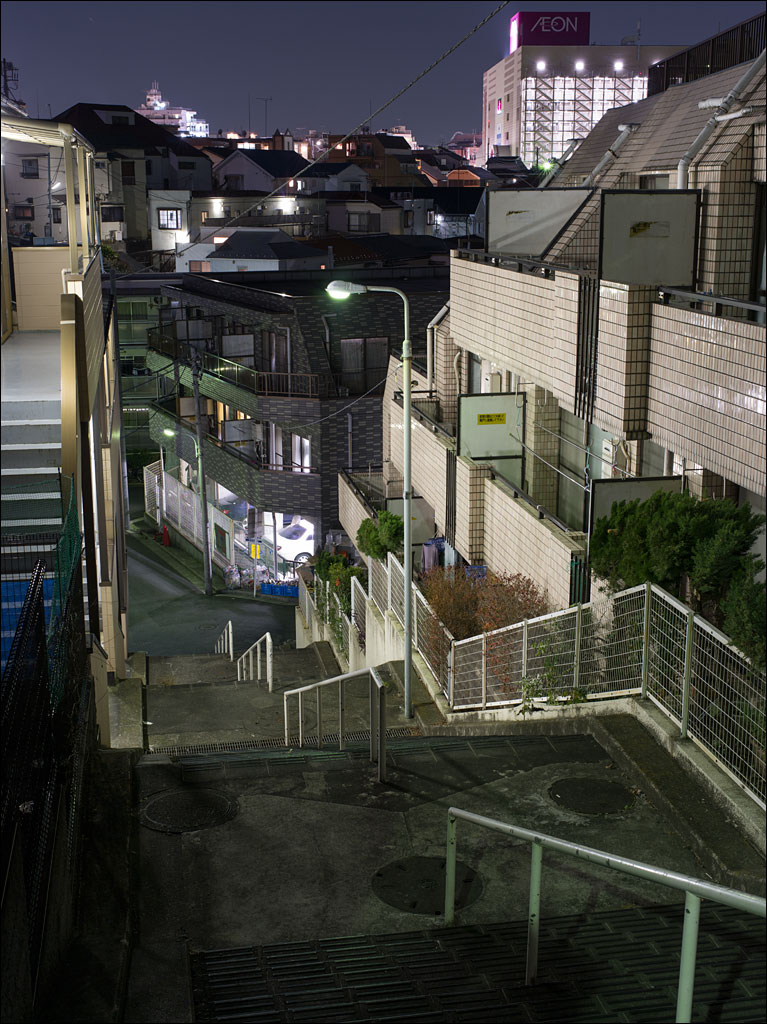 Tokyo neighborhoods are packed. The average single-family residence in Tokyo is 68m² or 732ft². Itabashi-ku, where this image was taken, has a population density of 16,924 people per square kilometer or 43,837 people per square mile. Itabashi-ku is at the edge of the metropolitan area. Click on the image for a larger view.
Tokyo neighborhoods are packed. The average single-family residence in Tokyo is 68m² or 732ft². Itabashi-ku, where this image was taken, has a population density of 16,924 people per square kilometer or 43,837 people per square mile. Itabashi-ku is at the edge of the metropolitan area. Click on the image for a larger view.

